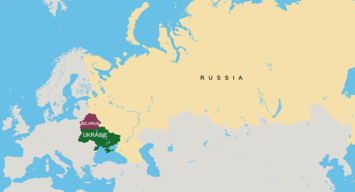
In his article of last summer “On the Historical Unity of Russians and Ukrainians”, Vladimir Putin wrote the following:
“But the fact is that the situation in Ukraine today is completely different because it involves a forced change of identity. And the most despicable thing is that the Russians in Ukraine are being forced not only to deny their roots, generations of their ancestors but also to believe that Russia is their enemy. It would not be an exaggeration to say that the path of forced assimilation, the formation of an ethnically pure Ukrainian state, aggressive towards Russia, is comparable in its consequences to the use of weapons of mass destruction against us. As a result of such a harsh and artificial division of Russians and Ukrainians, the Russian people in all may decrease by hundreds of thousands or even millions.”
The last sentence addressed the demographics of Russia, in particular the size of its population. For a long while, Putin has been mindful of Russia’s weak demographics. In the past, he has sought to stimulate Russia’s birth rate and has rewarded couples who have more children. According to UN estimates, the Russian population is not growing and its median age is rising. Because Putin views Ukrainians as the same people as Russians, a shift of the Ukrainian identity away from Russia and towards the West would mathematically reduce the total number of Russians. In other words, if you are Russian one day, you can be counted within the total Russian population. But if you no longer identify as Russian because of “forced assimilation”, it is possible that you may no longer be counted within that total.
So let’s take a quick look at the demographics of Russia, Ukraine and also Belarus since it too is viewed by Putin as part of the greater Russian people. As shown in the two tables below compiled from UN Population data, the population of Russia rose from 102.8 million in 1950 to 147.5 million in 1990, or a respectable average of 0.9% per year. But then it went flat after the breakup of the Soviet Union due to the deep economic problems that then affected Russia and other former Soviet Republics. According to the UN’s medium variant projection, Russia’s population will decline to 135 million in 2050. Meanwhile, the median age has nearly doubled since 1950 because couples are having fewer children, a phenomenon seen in many countries/regions including the United States and Europe.
Belarus and Ukraine show a similar profile with their population growth hitting a wall in 1990 and then flatlining and declining by 2050. And their median ages are evolving more or less in line with Russia’s. Of course, the Ukraine war will result in a faster decline of the population given that 2.5 million refugees have already left the country this month. And it will also result in a faster rise in the median age given that younger people are more likely to leave than older people. Perhaps the Russian plan is to encourage more births after such reunification, in which case the total going forward would end up higher. But other countries’ efforts at stimulating their birth rates have been uniformly unsuccessful in terms of impacting long term trends.
So, if we look at the totals in the first table and assume for the sake of analysis that Putin achieves his objective of reuniting the Rus populations of all three countries in some sort of federation, the total today would be around 200 million but expected to decline to 180 million by 2050 if current trends hold.
It can be meaningful for a country to have a larger population, especially if such a country aspires to maintain its status as a major world power. But because of technological and economic changes, demographic heft is no longer what it used to be. In war, smaller countries have been able to fight larger ones to a stalemate. And in economics, population size can be helpful but is insufficient on its own. There are many countries that have large populations and struggling economies.
The impact of demographics on economics is complex and cannot be reduced to one or two variables. But in general terms, the sweet demographic spot that is conducive to the greatest economic growth is a growing population (say at a rate of 0.5 to 1% per annum) combined with a declining dependency ratio. As we have seen above, Russia’s population is not growing. And as shown below, its dependency ratio is expected to rise between now and 2050.
Read the rest of this piece at Populyst.
Sami J. Karam is the founder and editor of populyst.net and the creator of the populyst index™. populyst is about innovation, demography and society. Before populyst, he was the founder and manager of the Seven Global funds and a fund manager at leading asset managers in Boston and New York.














